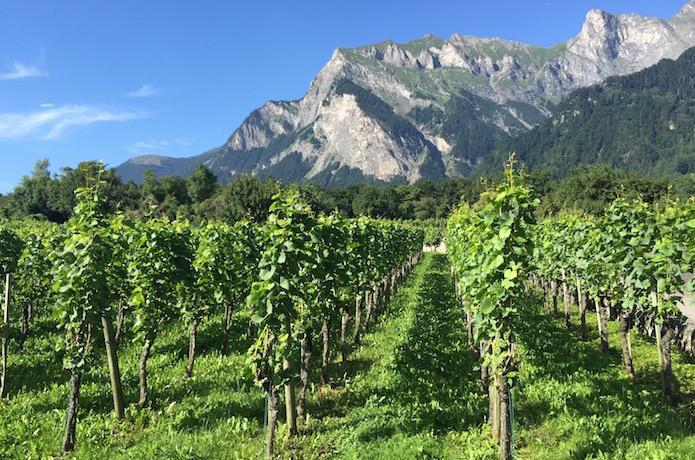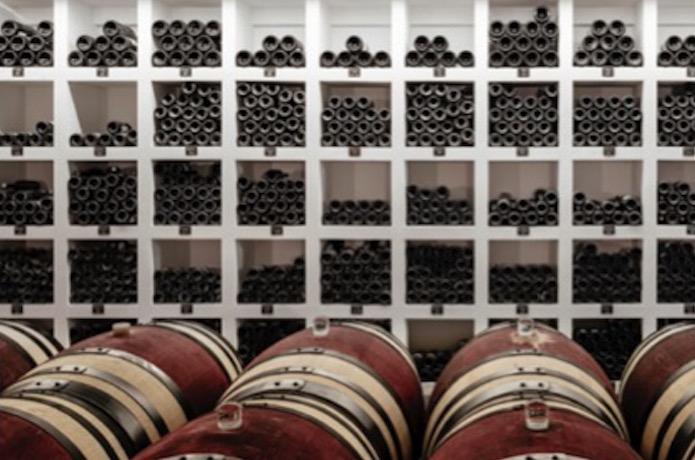Rare vintage
- Tuesday 24 October 2017
Traditionally overlooked among Europe’s producers, Switzerland’s small-scale, sustainably focused wine industry is now ripe for international growth.
“In Switzerland it is in our genes to do things well,” says musician turned winemaker Gilles Besse. “But everything is about scale,” he adds, explaining that there are only 15,000 hectares under vine in Switzerland, making it a mere dot on the world’s wine map; petite compared with neighbouring France (785,000 hectares), Italy (750,000) and Germany (102,000).
If you trudge up the slopes of the Valais region tucked between two of Switzerland’s highest mountain ranges and a 90-minute drive from Geneva, you’ll begin to grasp the difficulties for grape growers here. Row upon row of dry stone walls snake up the mountain, dividing space between the land’s respective owners. By necessity everything here is done by hand. The steepness of the vineyards and the cost of agricultural labour (the highest in Europe) means that wines made here have a hefty price tag. Home to more than 200 varieties of grape, six winemaking regions and some of Europe’s highest vineyards, Switzerland is producing bottles of excellent Alpine plonk. But sadly we know very little about them as so few (just 2 per cent) make it over the Swiss border.
For Hans-Peter Schmidt, a Valais resident and maker of Mythopia’s natural wines, the small international reach of Swiss wine hasn’t hampered his ambition. “It is important for me to see my wines in the right places,” he says, before explaining that he exports 90 per cent of his modest output of about 8,000 bottles a year, predominantly to high-end restaurants. This is a matter of both value and philosophy for Schmidt, whose wines have a high price point that speaks of the time and patience needed to make them.
“Ten per cent of the grapes go to the animals,” he says, pointing to bare patches on his vines as we scale the slopes of his vineyard. Schmidt works his land according to biodynamic principles, which is to say that he allows nature in. Bees, butterflies, vegetables and vines all coexist and thrive on the same piece of land, creating what Schmidt believes to be a more balanced ecosystem that, given time, can sustain itself without constant chemical maintenance or intervention.
The increasing focus on sustainability makes sense in a country where the beauty of nature is everywhere. Gilles Besse has worked hard to impose a standard across the Valais (he promotes Swiss wine as well as making it) to help his fellow producers and more natural solutions to their problems. The family-owned winery that Besse co-runs shares its name with his uncle, co-owner Jean-René Germanier, and is one of the oldest in Switzerland, having been established in 1886. Its wines have the fresh flavour you’d expect from chilly Alpine climes and as we tuck into a board of “assiette valaisanne” – traditional rye bread, smoky meats and raclette from Hérens cows – the freshness of the wine makes perfect sense.
Heading north, the landscape trans- forms from towering, snowy peaks into sloping farmland, where vines and apple trees dot the pastures and orchards. A 45-minute drive from Zürich in the region of Klettgau, which straddles the Swiss-German border, is the vineyard of young winemaker Markus Ruch.
“I’m at home when I’m in the vines,” says Ruch, who hails from a family of farmers and gardeners. He’s wearing a chunky knit jumper and sports a rugged beard – it’s hard to believe that he started his professional life in banking. He moves around his small plot of land with ease and explains how his time working in Burgundy and Ticino, the Italian region of Switzerland, was when his love a air with pinot noir began. “Seventy years ago this region was important for wine but today the quality isn’t there,” he says. Although villagers raise eyebrows at the sanity of starting a wine business here, others concede that Ruch is on to something in trying to revive the area’s fortunes. He has seen what few others in the region are able to: potential.
Meanwhile, inspired by their worldwide travels and winemaking friends in France and Germany, Daniel and Martha Gantenbein are now making some of the nest wine in Switzerland. Their winery in the village of Fläsch in the Rhine Valley is instantly recognisable, a thing of beauty constructed in 2006 by architects Valentin Bearth, Andrea Deplazes and Daniel Ladner. As we walk through the kitchen on the top floor, a glass-fronted room with jaw dropping views of the mountains and vineyards, Daniel Gantenbein proudly tells us about the complexity of the brickwork, the angles of which were calculated digitally to reflect and refract light.
The Gantenbeins produce about 30,000 bottles every year, most of it sold before it has even been made, having been pledged to patrons. Which brings us to what is perhaps the most important thing about Swiss wine: its scarcity. You can find the odd bottle of Mythopia or maybe one of Markus Ruch’s wines in a Zürich restaurant such as Gamper, the Artisan or Josef, but it is a matter of seeking the wine out, which means knowing about it in the first place. Swiss wine tourism is now ripe for better execution and the makers here have some subtle and very Swiss advantages: a superior-quality product that few can compete with, a time-honoured method and a demand that is quickly outstripping supply. The next step? Tapping into the thirsty market outside Switzerland itself.











